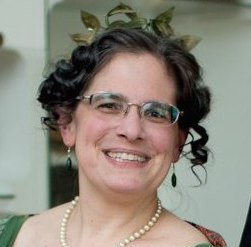Continuing on with the tiny traveling tango sequences from 1914, here’s one that’s a bit less tiny than the Two-Step Tango. “Tango No. 1” is listed in both editions of Dance Mad (St. Louis, 1914) with the note “As taught in our classes.”, which presumably meant the classes of F. Leslie Clendenen’s own academy. That means that this is as much a class practice sequence as a social dance. As I reconstruct it — and see the reconstruction notes below — it is a reasonable sixteen bars (thirty-two beats) in length, and suitably easy for a class, as it only involves four basic moves – walking, a spin turn, draw steps, and grapevine.
The starting position is a closed ballroom hold with the gentleman’s back to line of dance and the lady facing line of dance. The gentleman starts on the left foot, the lady on the right. Steps are given for the gentleman; the lady dances opposite.

